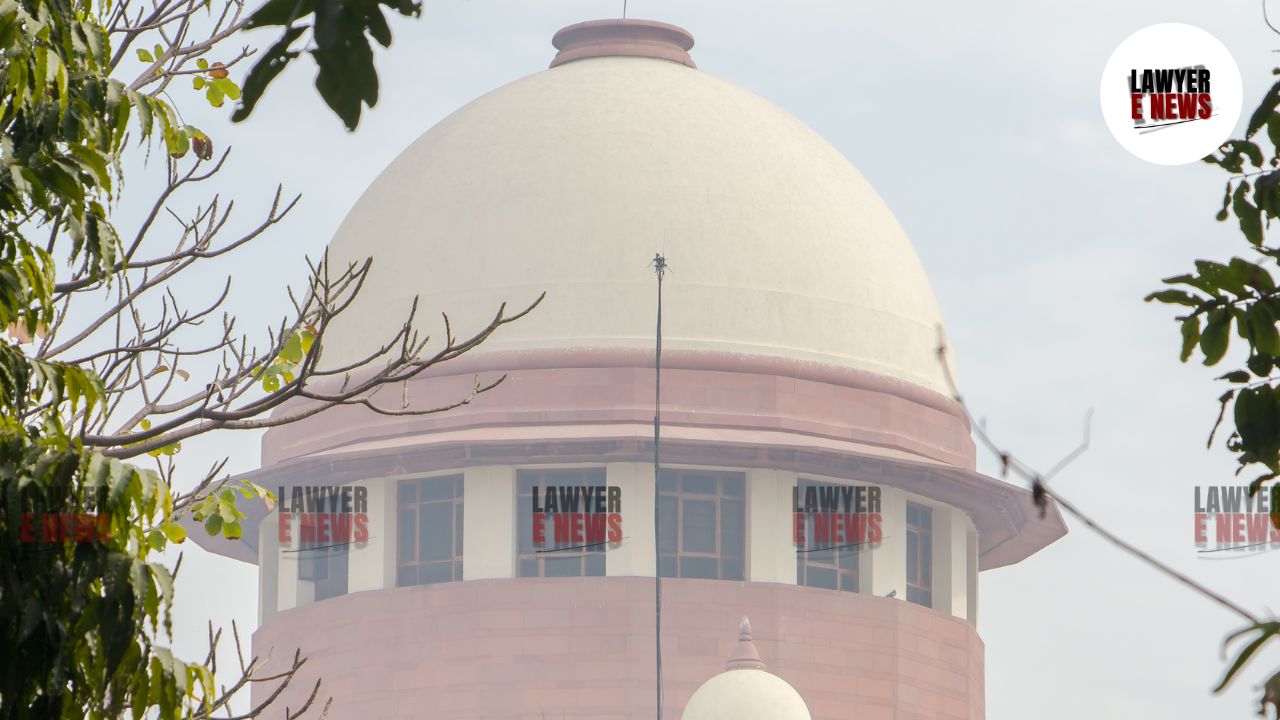-
by Admin
17 December 2025 4:09 PM



"In a case based on circumstantial evidence, the prosecution must establish a complete chain of circumstances pointing solely to the guilt of the accused" – Supreme Court acquitted Vinod Kumar, who was convicted under Section 302 of the Indian Penal Code, 1860 (IPC) for murder. The bench of Justices Abhay S. Oka and Ujjal Bhuyan held that the prosecution failed to establish a complete chain of circumstances necessary for conviction based on circumstantial evidence. The Court set aside the conviction, ruling that the "last seen together" theory was not proved beyond a reasonable doubt due to inconsistencies, omissions, and contradictions in the testimony of key prosecution witnesses.
"Omissions in witness testimony amounting to contradictions weaken the prosecution’s case"—Supreme Court
The case arose from the alleged murder of Dharminder, a young man from Delhi, on July 12, 1995. According to the prosecution, the appellant, Vinod Kumar, a neighbor of the deceased, took the deceased with him at noon on July 12, 1995, as witnessed by PW-3 (mother of the deceased). When Dharminder did not return home, his parents inquired with the appellant, who allegedly gave evasive replies. The next day, Dharminder's body was found on a terrace, strangled with a rope and hands tied behind his back.
The Sessions Court convicted the appellant under Section 302 IPC, sentencing him to life imprisonment and a fine of ₹2,000, which was upheld by the Delhi High Court. The appellant then approached the Supreme Court, challenging his conviction on the ground that the prosecution had failed to establish the case beyond reasonable doubt.
"Last seen together theory cannot be the sole basis for conviction unless proven beyond doubt"—Supreme Court
The prosecution’s primary evidence was the testimony of PW-3 (mother of the deceased), who claimed that she saw the appellant taking the deceased with him at noon on July 12, 1995. The prosecution argued that since the deceased was last seen with the appellant and was later found murdered, it was the appellant’s responsibility to explain what happened to the deceased.
The Supreme Court, however, found serious inconsistencies in PW-3’s statements, noting that key details were missing from her initial police statement under Section 161 CrPC. The Court observed:
"PW-3 claimed in court that the appellant forcibly held the deceased’s hand while taking him along, but this was absent in her police statement. Such a material omission amounts to a contradiction."
The Court further noted that PW-1 (father of the deceased) was not an eyewitness to the last seen event since he was asleep at the time. His statements about PW-3’s visit to the appellant’s house were hearsay and could not be relied upon as direct evidence.
"When the prosecution’s entire case hinges on the last seen together theory, the evidence must be unimpeachable. Here, the testimony of PW-3 is riddled with contradictions and improvements, making it unreliable."
The Court rejected the last seen together theory, ruling that it was not established beyond reasonable doubt.
"Evasive replies by the accused cannot substitute for proof of guilt in a case based on circumstantial evidence"—Supreme Court
The prosecution also relied on the appellant’s alleged inconsistent responses when questioned about the deceased’s whereabouts. However, the Supreme Court found that the claim of "evasive replies" was not supported by the prosecution’s own witnesses.
"PW-1 did not testify that the appellant gave misleading answers. Even PW-3’s statements about evasive replies were omissions in her police statement. Such omissions weaken the prosecution’s case."
Further, the prosecution alleged that the appellant’s absconding after the police complaint was registered indicated guilt. The Court, however, clarified:
"Mere absconding cannot be conclusive proof of guilt. A person may flee for various reasons, including fear of false implication. The prosecution must establish guilt through substantive evidence, not just conduct."
Since the prosecution failed to prove evasive replies beyond doubt, this circumstance could not be relied upon to convict the appellant.
"Failure to follow proper procedure in using witness statements under Section 161 CrPC noted, but not a deciding factor in acquittal"
Incorrect Use of Section 161 CrPC Statements in Trial Court
The Supreme Court also pointed out procedural errors in the trial court’s handling of witness statements recorded under Section 161 CrPC. The trial court directly incorporated portions of prior police statements into witness depositions, instead of properly proving them through the investigating officer.
"The correct procedure is to mark portions of the prior statements used for contradiction and prove them through the investigating officer. The trial court failed to do so."
While noting this procedural lapse, the Court clarified that it was not a deciding factor in the acquittal, as the prosecution’s case had already failed on the merits.
"When two crucial links in the circumstantial chain are missing, conviction cannot be sustained"—Supreme Court
The Supreme Court reiterated the well-established principle that in cases based on circumstantial evidence, the prosecution must establish a complete chain of circumstances that points solely to the guilt of the accused. Relying on Sharad Birdhichand Sarda v. State of Maharashtra, (1984) 4 SCC 116, the Court observed:
"Two significant circumstances—(i) the last seen together theory and (ii) evasive replies—were not established beyond reasonable doubt. When a case is based on circumstantial evidence, even a single missing link can break the chain of guilt. Here, two such links are absent."
Since the prosecution failed to meet this standard, the Court held that the appellant was entitled to the benefit of the doubt.
"A conviction based on mere suspicion or incomplete evidence cannot be sustained. The prosecution’s case collapses when key circumstances remain unproven."
The Supreme Court allowed the appeal, set aside the conviction and sentence, and acquitted Vinod Kumar of all charges. The Court directed that the appellant’s bail bonds be cancelled immediately.
"For the reasons recorded above, the conviction and sentence of the appellant cannot be sustained. The impugned judgments are quashed and set aside. The appellant is acquitted of the offences alleged against him."
This ruling reinforces the importance of strict adherence to evidentiary standards in circumstantial evidence cases and sends a clear message that convictions cannot be sustained on weak or contradictory evidence.
Date of Decision: February 13, 2025
